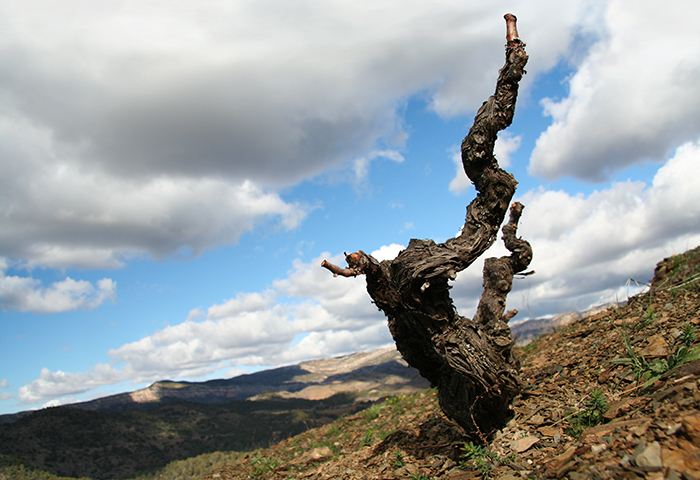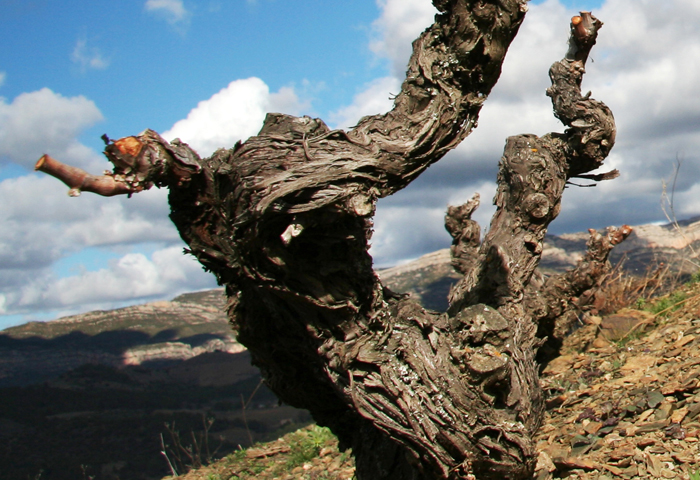Wisdom of the Old Vines
Reflection No.EP14
A Priorat old vine says, “I have lived a long time on the side of this mountain, season after season, year after year. I have endured scorching heat, scathing winds, scarce or late rains or worse. I have witnessed triumphs and tragedies, struggled and thrived, been loved and forgotten, and still, I am here. I am a journey into the Earth in search of nourishment. Survival is the will to drink deeply of life.”
The Priorat’s vinyes velles, old vines, are defined by the DOQ as being at least 75 years of age. As of 2020, there were 1453 acres / 588 hectares of old vines scattered throughout the region, about a third of the total vines planted. All villages have old vines but the oldest Carinyena is planted around Porrera. Bellmunt has the oldest Garnatxa, along with Gratallops, Poboleda, Scala Dei. The largest quantities of old vines in general are found around Porrera and Bellmunt, followed by Gratallops, Torroja and Vilella Baixa and Poboleda.
They were grown en vas, like a bush. Because of their age, the old vines were never irrigated. The people who planted them took their mules to the vineyards and hand watered them for a year or so, but then it was up to the vines to adapt to the terroir on their own. They sent their roots down as far as 66ft / 20m to find the mineral-rich water stored there. The growers take pride in their old vines and enjoy competitively sharing stories about the length of their vines’ roots. Their depth has both nourished the old vines and given them resilience to survive when surface water is scarce.
It takes fortitude to grow old in the Priorat. If the vines were not getting pulled out because another crop was more profitable, they were fighting off blights like phylloxera and powdery mildew. The old vines’ endurance embodies the concept of “What does not kill you makes you stronger.” The reward for their persistence, and their growers’ devoted care, is instinctively balanced crops. The equilibrium results in wines with fully integrated characteristics of the terroir. In the Priorat this means evocative complexity, a taste of time that cannot be seen, only sensed, profoundly.
As the sun approaches the horizon, it casts an omnipotent glow across the vineyards. There is no sound, only stillness interrupted by the occasional chatter of birds. The craggy old vines keep their vigil, anchored to the land by their deep roots. They are the sentinels of time, a conduit between the Earth and the sky, living in a synchronized rhythm with the grower. When twilight descends across the landscape and the owls send haunting calls into the night, the vines continue their dialogue with the universe, sending their stories of the day into the sparkling sky.
This story is a excerpt from Ethos Priorat by Elizabeth Hecker.




